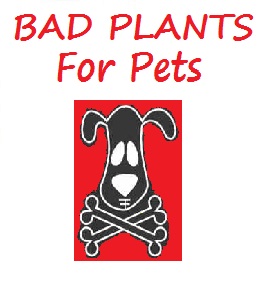Mandrake

Along with Deadly Nightshade, Mandrake is considered to be one of the most toxic plants found in the Eastern Hemisphere. All parts of the plant are toxic and contain anticholinergic tropane alkaloids to include atropine, hyoscine (scopolamine), and hyoscyamine. This plant has a long history as both a medicine and poison. One testament to the deadly nature of this plant comes from the name of its genus "atropa", so named for one of the Greek Fates, Atropos, who held the shears which cut the thread of human life.
The primary component that makes this plant so toxic is the alkaloid, Atropine, which interferes with the parasympathetic division of the central nervous system. The parasympathetic system is responsible for relaxing the body, slowing the heartbeat and breathing rate, constricting the pupils and stimulating digestion. When working normally the nerves of the parasympathetic system release acetylcholine, which then binds to the receptors of adjacent nerves stimulating them. Atropine blocks the receptors, preventing acetylcholine from transmitting the nerve pulse from one nerve to the next. In laymans terms it disrupts the ability of one nerve cell to receive messages from another.
The clinical signs of atropine intoxication will generally begin 30-60 minutes after ingestion and may last as long as 24-48 hours as it represses the digestive tract and the ability to eliminate (it is excreted in urine). In the heart, atropine will go to work blocking the action of the vagus nerve; the nerve responsible for regulating and slowing the heartbeat. Due to the action of atropine, the heart will beat faster by a speed of 20 to 40 beats per minute. In the eyes, atropine will cause dilation of the pupil, by blocking the contraction of the papillary sphincter muscle; which is normally stimulated by acetylcholine release, allowing the papillary dilator muscle to contract and dilate the pupil. It will also paralyze the striated smooth muscle of the eye making it impossible to focus on objects. Of most importance in cases of poisoning is the fact that atropine is a very effective sedative and CNS depressant since acetylcholine is also used as a neurotransmitter in the brain to send messages to the rest of the body. Once these pathways are disrupted there can be a near total disconnect between the brain and the rest of the body resulting in a total lack of muscle coordination, the inability to control eye movements, loss of the ability to swallow, walk, or perform any other voluntary movements, extreme excitement, delirium, mental confusion, disorientation, hallucinations, and finally unconsciousness or a comatose state. Paralysis of involuntary muscles, those responsible for breathing, making the heart beat etc. is also possible and internal paralysis of the central nervous system may be fatal. Death from the poison however is rare, and poisoning (if caught early) can generally be treated by a skilled veterinarian.
As every part of the plant is extremely poisonous, it is not advisable to handle the leaves, berries, or roots if there are any cuts or abrasions on the hands. In order of toxicity, the roots are reported to be the most poisonous, followed by the leaves and flowers and lastly the berries. Additionally most sources indicate that the plant is considerably more toxic for humans, dogs and cats than it is for many grazing animals.Early literature dating near the first part of the twentieth century notes that:
[blockquote]Though so powerful in its action on the human body, the plant seems to affect some of the lower animals but little. Eight pounds of the herb are said to have been eaten by a horse without causing any injury, and an ass swallowed 1 lb. of the ripe berries without any bad results following. Rabbits, sheep, goats and swine eat the leaves with impunity, and birds often eat the seeds without any apparent effect, but cats and dogs are very susceptible to the poison.[/blockquote]There are no definitive tests to determine if an animal has consumed this plant other than having witnessed them ingesting it, or finding identifiable portions of the plant in the pets mouth. It is said that urine from affected animal will induce dilation of the eye if applied topically to the affected animals eye.
Prevent further ingestion of the plant. Consult a veterinarian. Remove any existing plant material from the mouth and thoroughly flush with water. Symptomatic and supportive treatment should be administered as indicated. Induce vomiting (the vomitus should be considered toxic), gastric lavage, Orogastric administration of mineral oil or activated charcoal may decrease absorption of the toxin. If respiration is depressed, artificial respiration with oxygen should be considered necessary. . Catheterization may be necessary if urinary retention occurs. Since atropine elimination takes place through the kidney, output must be maintained and increased if possible, however, dialysis has not been shown to be helpful in overdose situations. Rarely administration of a cholinergic drug (such as physostigmine, pilocarpine, or arecoline) is used, however, no clear benefit to the use of these drugs has been demonstrated.
Luckily consumption of the plant is often self limiting due to decreased ingestion of the toxin after initial signs of toxicity. In most cases with prompt treatment the prognosis is good and animals should make a full recovery within 24-36 hours.




